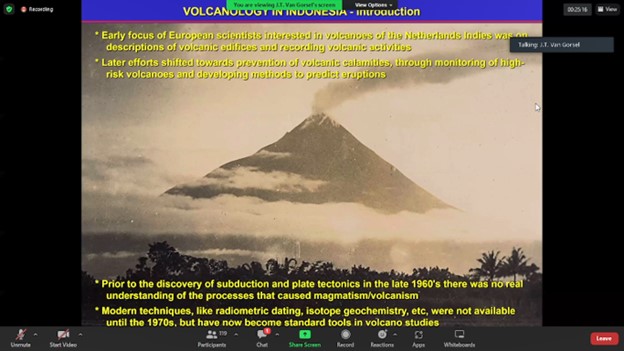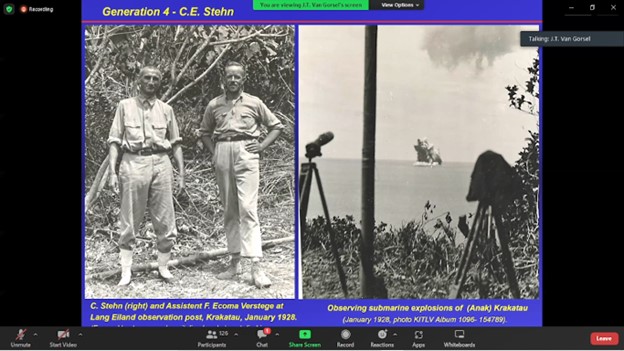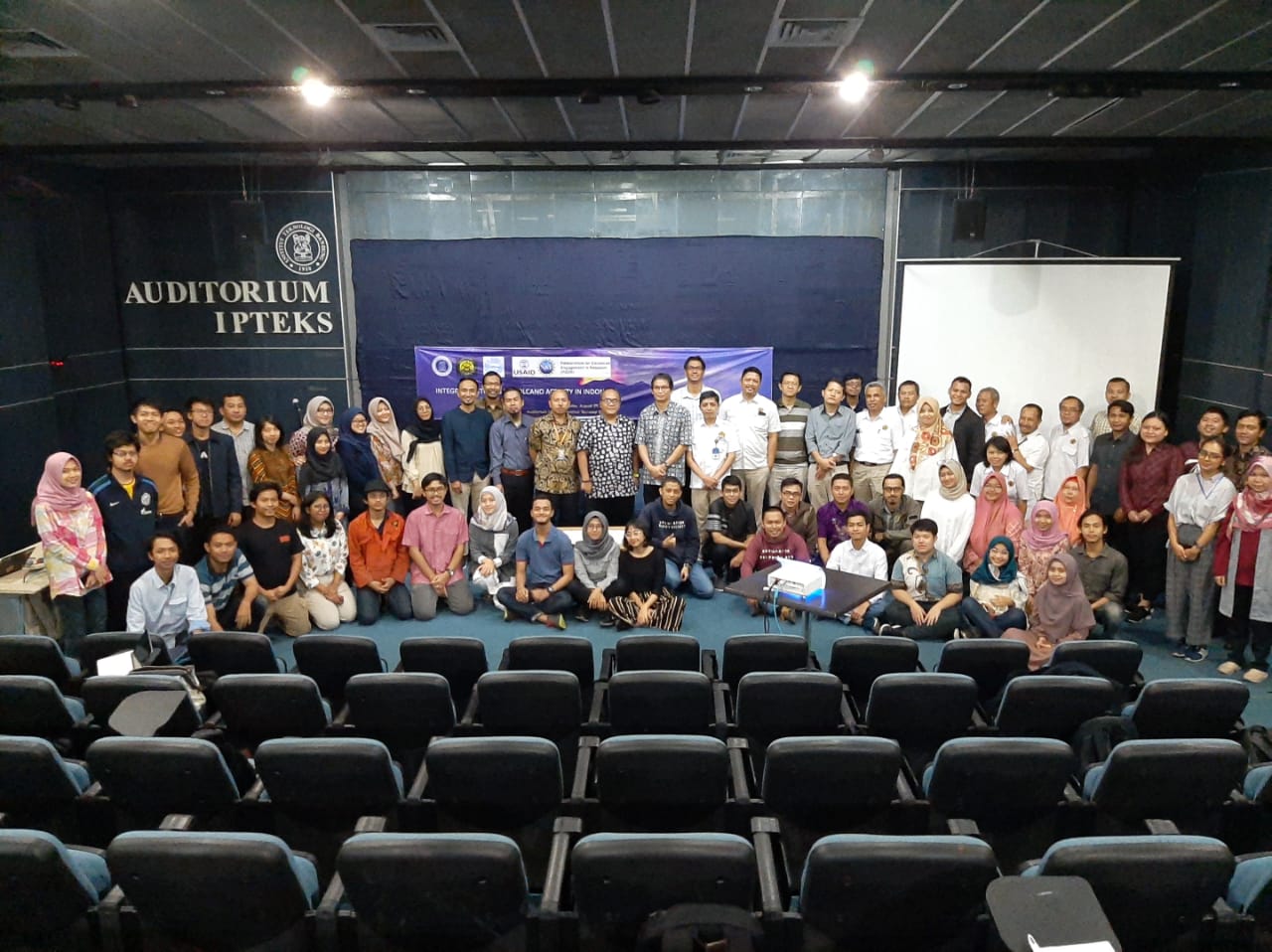Looking Back at the Journey of Volcanoes Exploration and Research in Indonesia from the 1800s

BANDUNG, itb.ac.id – Indonesia as one of the countries that lie on top of the ring of fire, has long since been one of the main objects of interest of geologists around the world to conduct their research on volcanoes. J.T. Van Gorsel, a geologist from the Geoscience Research, Houston, Texas, tried to look back into past geologist researchers in this general lecture Kapita Selekta 1 (GL5002) which was titled "Exploring and Observing Volcanoes in Indonesia in the 1800s-early 1900s" on Thursday (15/9/2022).
In his presentation, Van Gorsel said that Indonesia has around 125 active volcanoes, the majority of which are spread around the Sunda-Banda Arc, North Sulawesi-Sangihe Arc, and West Halmahera arc. Beginning in the 1770s, researchers and geologists from all around the world come to Indonesia to uncover the history and study the characteristics of those volcanoes.

He said that in the beginning most of the European researchers were only focused on the structure and the activity of the volcanoes in Indonesia. In time, those researchers began to turn their focus on the disaster mitigation study through the development of various eruption prediction methods. Van Gorsel divided the trends of research on the volcanoes in Indonesia into five generations.
"I tried to divide the periodization of volcanoes research in Indonesia into five periods. First, research by amateur researchers who were only interested in the shape of the volcano. Then we became more serious when the European naturalist started to come, it marked the beginning of the second period. In the third generation, when most of the research was carried out by professionals (geologists and mining engineers). The fourth and fifth generations are the most massive development because they are directly supported by the national committee and actively joined by Indonesian researchers," he explained.
In the first generation, volcanoes were only used as an object of illustration or explanation in cartography books which were in high demand at that time. Some of the volcanoes that appeared in the VOC-era cartography book are Krakatoa Volcano in the "Atlas Major" book and Gamalama Volcano in the "Oud en Nieuw Oost-Indies" book.
In the next generation research on volcano haven't been systematically carried out by professional. However, the improvement can be seen through the consideration of volcanoes as the main object of research rather than as illustrations, even if it was only illustrated in a simple scheme.

Entering the third generation around the year 1880-1920 the first official research on volcanoes was carried out by geologists and mining engineers from the Geological Survey which was led by R.D.M. Verbeek. During his research, Verbeek focused on the spread and the geological characteristic of the region. During the Krakatoa explosion in the year 1883, Verbeek successfully researched and documented that event, this in turn make his name very popular among the geological community.
The fourth generation of research which happened between 1920 and 1949 was marked by the formation of the Vulcanology Survey Department (Vulkaanbewakingdienst) under the Dutch East Indies Mining Service (Mijnwezen). The formation of this department is a response to the eruption of the Kelud Volcano in 1919 which claimed more than 5000 lives. The main task of Vulkaanbewakingdienst is to compose a mitigation scenario, danger zone map, and evacuation route, and carry out a monitoring program on some of the prioritized volcanoes.
"The fourth generation period is a key to the modern age volcanoes research. From here they began to focus on carrying out monitoring and composing reports from volcano activities survey. However the research was only being carried out by some of the key personnel of the Vulkaanbewakingdienst itself," Van Gorsel said. After Indonesia gained independence in 1945, volcanoes research is still continued to this very day with more comprehensive systems. Some of the research shows that the majority of the volcanoes in Indonesia are a unique part of each magma arc.
The magma that is produced from the volcanoes in Indonesia has the combined characteristic of Pacific and Mediterranean magma. Moreover, research showed that volcanoes in all regions of Indonesia are generally very explosive and will emit breccia and ash during their eruption. Therefore, most of the damage and casualties from a volcano eruption are not caused by lava, but by the pyroclastic flow or lahar.
Reporter: Hanifa Julianna (District and City Planning, 2020)
Translator: Favian Aldilla R (Civil Engineering, 2019)

scan for download






